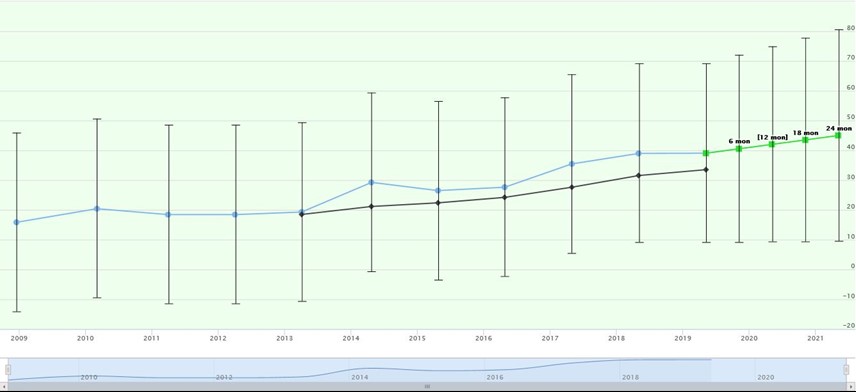Weights have to be recalibrated regularly in compliance with the applicable norm. The results of the recalibration of the weights could differ highly from the preceding results of the calibration. There are several factors causing this perceived change of the weight, which are mostly interdependent:
- Every calibration can be executed with a certain accuracy only. The accuracy of the determination will be indicated together with each weighing result in terms of the extended uncertainty. It shows with a degree of 95%, where to locate the real value compared to the indicated value.
Therefore it could be possible in theory that the difference between the weighing results of two calibrations of the same weight could even be higher than the indicated uncertainty. - If a weight becomes lighter between two calibrations, this is mostly due to the handling of the weight. Even the most careful contact with the weight, such as picking it up with forceps or placing it on the balance, can remove smallest quantities of material of the weight. Often these traces of removal are not visible to the eye. Like this the regular use can cause such significant changes of the mass of the weight.
- A weight can also get heavier between two calibrations. Reasons for this are mostly not visible sedimentations of particles from the atmosphere in which the weight is kept and used. Another reason might be the rough handling of the weight. An example for this is the handling with bare hands or the improper contact with not suitable liquids
Though the weight will be carefully cleaned, significant sedimentations in the asperities of the material can remain. Even the international kilogram prototype (reference original weight) which is handled with utmost care changed measurably. The reason for this has not been determined till today.
If a further calibration of the weight shows a too high change, you should consider shortening the interval of the calibration. This is valid especially when the change is so considerable that it does not meet the confirmed and requested tolerances in the DAkkS certificate.
In the picture below you can see the change of the conventional value of a weight for several years as well as the forecast on how the conventional mass will change in the future with equal use.
You can also see a forecast of how the conventional weight value will change in the future with the same usage.
The change of a weight is therefore usual within certain tolerances, but this must be monitored.

If the recalibration of a weight shows a too large change as in the following example this must be taken into account.
In this case, the forecast will show that the weight within the current recalibration interval will probably be outside the tolerance.
It should be noted that a longer recalibration interval also increases the measurement uncertainty.
To prevent this and any corrective measures that may subsequently be necessary, the weight can be adjusted / exchanged in advance or the recalibration interval can be shortened.





